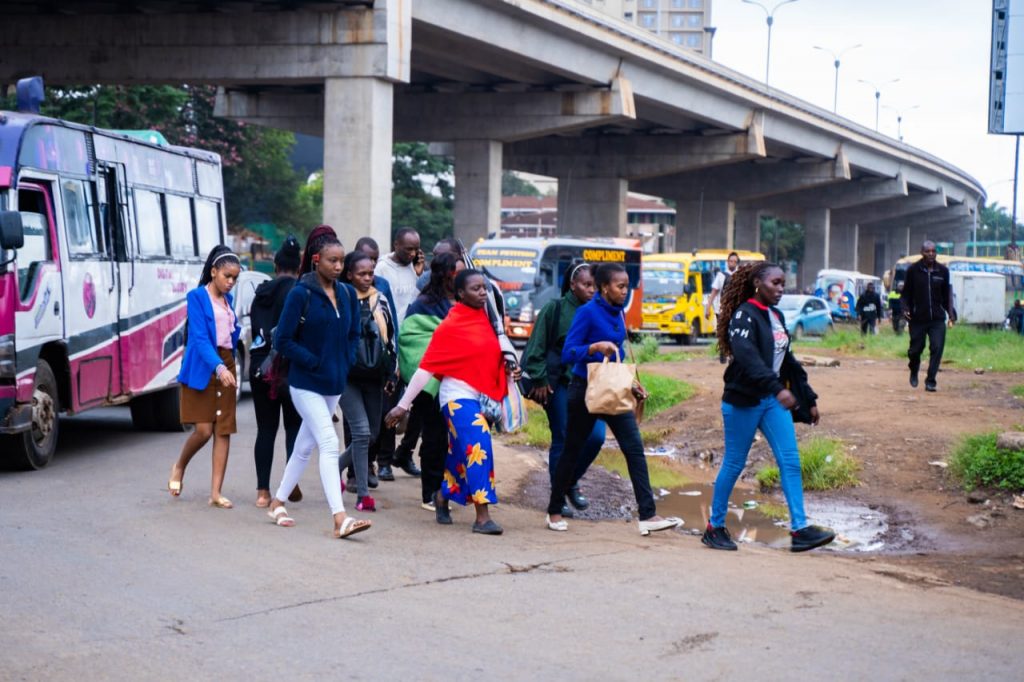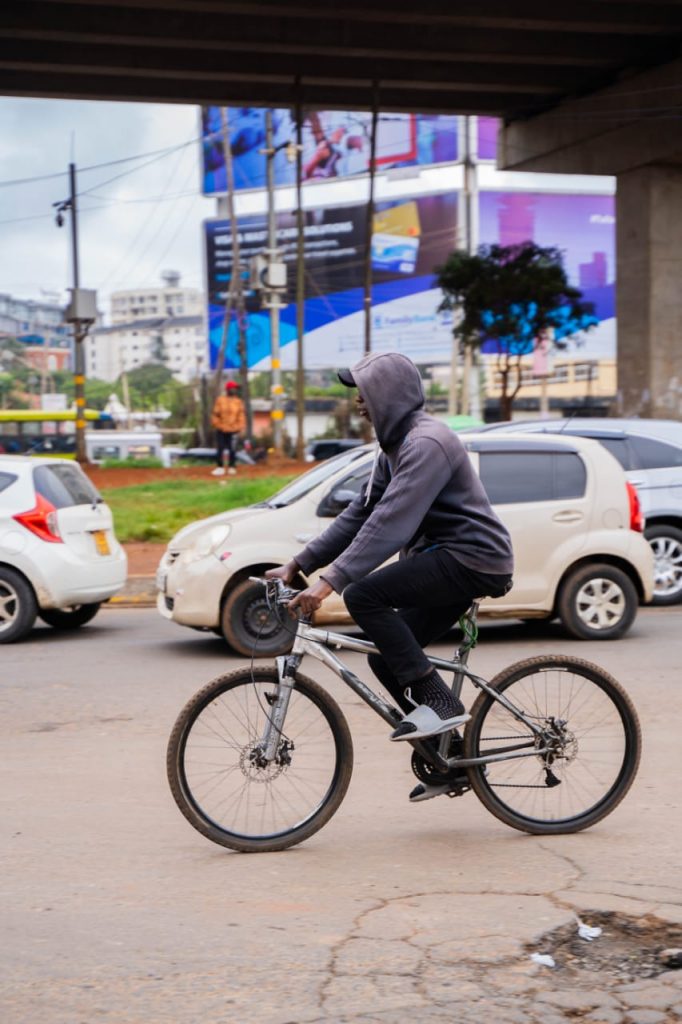Why Road Safety for Pedestrians in Nairobi Remains an Afterthought

By Samwel Doe Ouma
In the bustling city of Nairobi, where thousands walk and cycle daily to work, school, and markets, roads remain perilous battlegrounds for vulnerable users.
The expansion of highways, construction of expressways, and redevelopment of intersections continue to ignore a fundamental need—safe infrastructure for pedestrians and cyclists.
At the Westlands roundabout, a crucial intersection in Nairobi’s road network, 2,562 pedestrians and 119 cyclists cross every 30 minutes during peak hours—between 7 a.m. and 8 a.m. daily. This was revealed by a recent observation conducted by the Association for Safe International Road Travel (ASIRT-Kenya), a road safety advocacy organization.
Eng. Isaac Gitoho, Chairman of ASIRT-Kenya, said that many Kenyans walk to work, school, hospital, and to other social amenities, making the call for safe walking interventions urgent.
“Supportive infrastructure and reduction of speeds to 30km/h in places of high population like residential areas, around schools and hospitals can go a long way in mitigating the risks posed to those who are walking and cycling,” said Eng. Gitoho, adding that ASIRT Kenya is keen to support the work of the government in its initiatives.
Despite the massive foot traffic, the area lacks basic pedestrian facilities such as crosswalks, speed limits, or designated cycle lanes.
“There are no speed limits, though it is recommended that such intersections should have low speeds, such as 30km/h, due to the great interaction of vehicles and people,” Eng Gitoho noted. “Dedicated crossing points are required since bus stops and commercial activities are ongoing on both sides of the highway. Road authorities should prioritize the vulnerable users like pedestrians and cyclists.”
The lack of proper planning and safety design has devastating consequences. Data from the National Transport and Safety Authority (NTSA) reveals that between January to March 2025, 420 pedestrians and 301 motorcyclists lost their lives, making them the most affected road users.
“Intersections are particularly unsafe for pedestrians and cyclists,” said Barasa, a motorcyclist who operates at Kariakor roundabout. “It’s where a lot of crashes occur because during rush hour, no one wants to give way to one another.”
The construction of the Nairobi Expressway only exacerbated these dangers. Walking areas were destroyed, and people are now forced to compete with cars, especially during rush hours. As Nairobi grows, so does its reliance on motorized transport, at the expense of those who travel by foot or bike.
A 2021 study by Clare Cummings and Beatrice Obwocha titled “At the Crossroads: The Politics of Road Safety in Nairobi” points to a key issue: political priorities. “New roads are a tangible sign of government action, whereas road safety improvements are less visible,” the report states, adding that “politicians gain more public recognition for road improvements than for road safety improvements.”
The same study highlights how, in the aftermath of pedestrian fatalities, authorities often blame “jaywalking,” poor visibility, or weather. However, experts argue that vehicular speed is the most decisive factor, and one that can be regulated.
Internationally, the Global Alliance of NGOs for Road Safety has emphasized the need for 30 km/h zones, pedestrian crossings, speed bumps, and footpaths as cost-effective solutions with massive returns. “When people can walk safely, it can improve health, support climate targets, and make societies fairer for those who cannot afford a private vehicle,” the Alliance notes.
Studies show that implementing these interventions could reduce pedestrian deaths and serious injuries by up to 99 percent. Furthermore, according to the International Road Assessment Programme (iRAP), every dollar invested in such infrastructure yields an $8 return through reduced healthcare costs, insurance claims, and productivity losses.
Despite global best practices and mounting evidence, Kenya’s roads remain engineered for speed, not safety. The Ministry of Roads’ own Road Sector Investment Programme (RSIP) 2010 highlights this bias, estimating that every shilling invested in road construction yields nearly three shillings (less than a dollar) in return, based purely on economic grounds, with little regard for public health or equity.
But as Nairobi urbanizes rapidly, the need for a pedestrian-first approach becomes more urgent. The 8th UN Global Road Safety Week called for governments worldwide to create streets for life, emphasizing walking and cycling. Kenya cannot afford to be left behind.
Walking, after all, is healthy, sustainable, equitable, and free. But without a shift in policy and infrastructure design, our roads will remain dangerous for vulnerable users.
 Provided by SyndiGate Media Inc. (
Syndigate.info
).
Provided by SyndiGate Media Inc. (
Syndigate.info
).
Posting Komentar untuk "Why Road Safety for Pedestrians in Nairobi Remains an Afterthought"
Posting Komentar